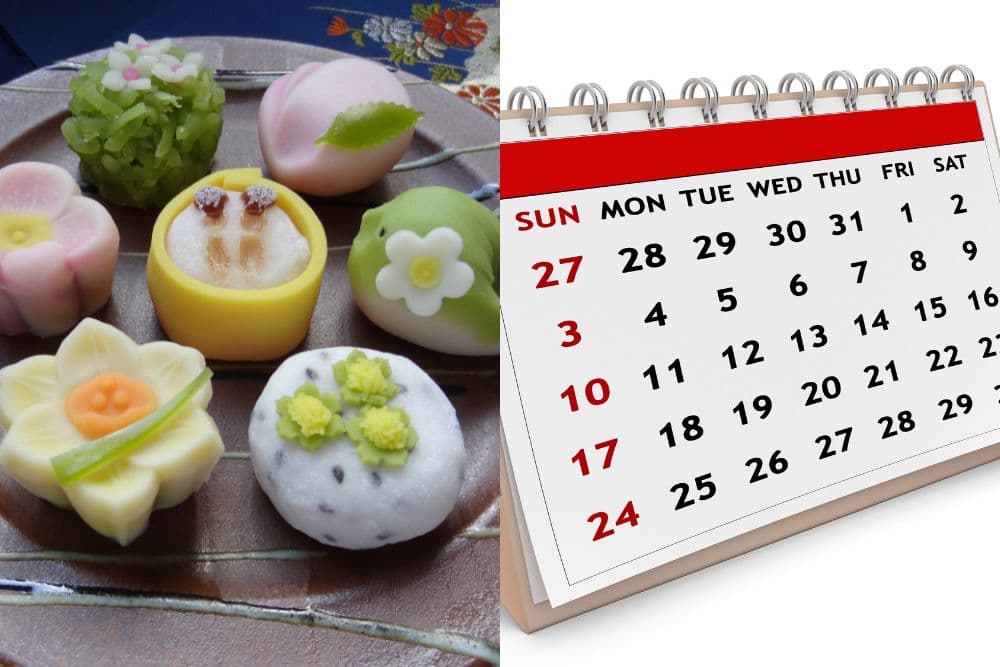
Valentine’s Day, White Day, and Other Sweets-related Days in Japan
|
|
Time to read 5 min
|
|
Time to read 5 min
In Japan, there are several days and events related to sweets and snacks; these include Valentine's Day and White Day, as well as many other observances which, even if not officially recognized, are still a big part of the Japanese popular culture and an opportunity to appreciate the great variety of treats that the Japanese food industry offers. Let's take a look at some of them!
Valentine's Day is celebrated on February 14th. It was first introduced in Japan in the 1930s by confectionery companies targeting foreign residents. Nowadays, it has become part of the Japanese culture; however, it is quite different from the corresponding Western holiday; unlike in Western countries where both men and women give gifts to their special ones, in Japan, it is customary for women to give gifts like socks, neckties, and typically chocolates to men. Thanks to Japanese company's efforts in the 1950s to promote Valentine's Day to the domestic market, mainly targeted young women.
There are two chocolate types:
In Japan, White Day falls on March 14th, exactly one month after Valentine's Day. The tradition originated in Japan in the late 1970s and was promoted by confectionery companies to boost sales. Initially, there were various names and dates, such as "Marshmallow Day" and "Candy Day." Still, in 1980, the Japan Confectionery Association designated the "White Day." Over time, it has become an established part of Japanese culture.
The term “white” is a symbol of purity and the fresh love of young people. On White Day, men return the gifts they received on Valentine's Day from women. They can give white-colored gifts such as white chocolate, marshmallows, white jewelry. They can also give bouquet of flowers, stylish accessories, or a box of sweets.
Sweets Day, or Okashi no Hi, is celebrated on the 15th of every month; this date was chosen because the first National Confectionery Expo was held on April 15, 1911.
Since 1980, February 28 has been celebrated as "Biscuit Day". The term "biscuit" can be traced back to the Latin term "bis coctus," which means "twice-baked"; February 28 can be written as 2/28, with the number 2 that means "twice" and the number 8, which can be pronounced "Ya" that recalls the word "Yaku" which means to "bake."
"Chewing Gum Day" is celebrated on June 1 since it is traditionally known as the "teeth-strengthening day.": during this date, Japanese in the Heian era used to help babies strengthen their teeth by making them bite specifically designed toys.
Milk Caramel is a popular treat in Japan; it was first sold here on June 10, 1913, and therefore, June 10 is still celebrated as "Milk Caramel Day."
Wagashi are traditional Japanese sweets, often enjoyed during tea ceremonies (but not only!); nowadays, they are appreciated worldwide for their wide variety of shapes and colors and exquisite beauty. Wagashi are typically made from ingredients like glutinous rice, rice four, azuki (sweet red bean) paste, and agar-agar, which contribute to the characteristic delicate taste of these traditional treats. Wagashi are an essential part of Japanese culture and are often decorated with natural motifs like cherry blossoms, rabbits, maple leaves, and snowflakes.
Since 1978, June 16 has been celebrated as "Wagashi Day": this event derives from the Kajō rites, which consisted of consuming sweets and praying for fortune during the Edo period.
Japan has a wide variety of snacks: they are inspired by local traditional and Western treats and are loved by people of all ages. The All Nippon Kashi (meaning "snack") Association has chosen June 21 as the "Snack Day" because ancient Japanese used to eat crunchy-cooked mochi to celebrate the Summer solstice, which occurs on this date.
Now, nuts such as almonds and peanuts have become a daily snack with sakè. July 22 is a day dedicated to them, based on a wordplay: the word "nuts" is similar to the term "natsu," which means "summer"; this is why Nuts Day is celebrated in July, which is a summer month.
Nowadays, the Japanese sweets industry offers a great range of treats and desserts inspired by Western confectionery traditions. They are celebrated on September 29, St. Michael's Day; St. Michael is considered the protector of pastry chefs in France.
Pocky (known as "Mikado" in American and European countries) and Pretz are two of the most popular snacks in Japan; November 11 (11/11) was chosen as the "Pocky and Pretz Day" because the repetition of the number "1" (11/11) recalls the characteristic long and thin shape of these treats.
Japanese sweets and snacks are becoming increasingly popular worldwide: learning about some of the days dedicated to them will allow you to discover and appreciate a great variety of these treats, and why not? You may find the perfect gift to give your special one on the next Valentine's Day (or White Day, too)!


